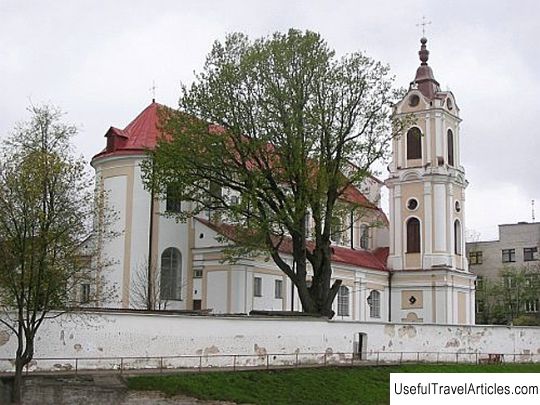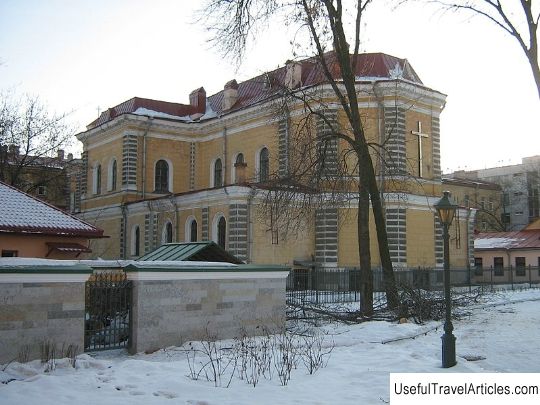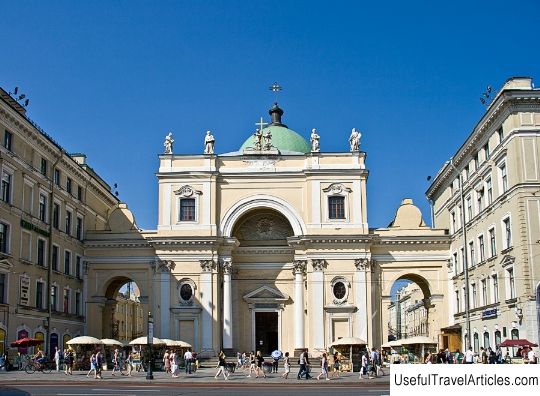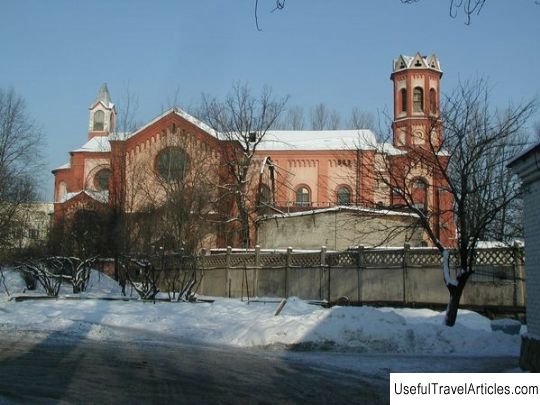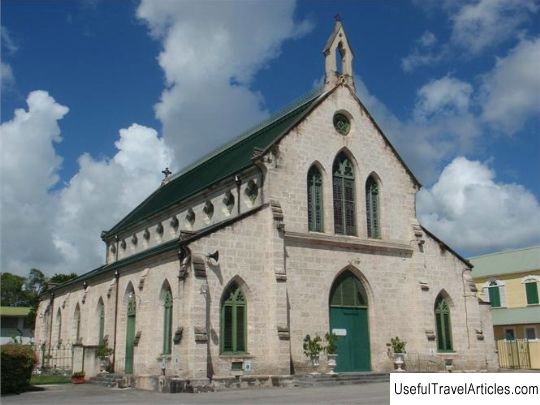Catholic Church of the Lourdes Mother of God description and photo - Russia - St. Petersburg: St. Petersburg
Rating: 8,0/10 (254 votes) 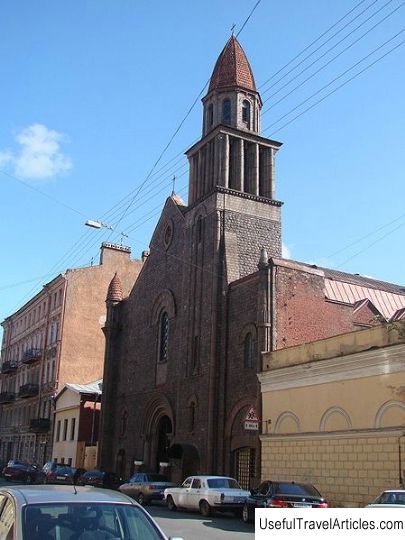
Catholic Church of Our Lady of Lourdes description and photos - Russia - St. Petersburg: St. Petersburg. Detailed information about the attraction. Description, photos and a map showing the nearest significant objects. Photo and descriptionThe Temple of the Lourdes Mother of God is one of the Roman Catholic churches in St. Petersburg, located in Kovensky lane. Many important events in the history of the Catholic community of St. Petersburg and the Russian Catholic Church as a whole are associated with this church. For a long time, the temple was one of two in Russia and the only active Catholic church in the city. Here in 1926 the Apostolic Administrator of Leningrad in difficult revolutionary years, Father Anthony Maletsky, was secretly consecrated. In the 60s. XX century, one of the parishioners of the Church of Our Lady of Lourdes was Tadeusz Kondrusiewicz, who later became Metropolitan and head of the Catholic Church in Russia. Since the 90s. the ceremonies of ordination to presbyters and deacons and rituals of renewal of monastic vows by members of various congregations and orders took place here more than once. The history of the Church of Our Lady of Lourdes began in 1891, when the French Catholics, members of the community of the Church of St. Catherine, built a small chapel in the Church of St. Catherine of Alexandria. The main shrine of this chapel was the statue of the Virgin Mary, which was brought from Lourdes. At that time, the cult of the Virgin Mary of Lourdes was already widespread in the Catholic Church. On October 19, 1898, Nicholas II gave the highest permission to build and maintain another Catholic Church in St. Petersburg. Immediately after that, fundraising and the search for a site for the construction of the temple began. At the end of 1900, the French community acquired a plot in Kovensky lane between the tenement house and the carriage factory of Karl Krummel. The project of the future temple of the Mother of God was ordered from L.N. Benois, the son of the famous architect of the highest court, N.L. Benois, who was a syndic of the Catholic community of St. Petersburg. The temple was founded on December 29, 1903. All construction work was carried out exclusively with donated funds and proceeds from the lottery. And since this money was constantly not enough, work on the construction of the church was suspended, and the project was redesigned in order to reduce the cost of construction. New project by L.N. Benois developed together with M.M. Peretyatkovich. By the fall of 1909, the construction of the building of the Church of the Mother of God was completed. The consecration of the temple took place on November 22 (December 5, new style) 1909 The temple is made in the tradition of Romanesque architecture using some elements of the Northern Art Nouveau. The main massif of the building is crowned with a thirty-meter four-sided bell tower of two tiers with a faceted dome. A gable pediment completes the facade faced with coarse-chipped granite. The vault of the church is made of reinforced concrete. During the construction of the church, Finnish granite was used, which remained from the construction of the Trinity Bridge, provided by the French construction company Batignol. Cement was supplied by the Zhelezobeton plant. The interior of the church is represented by large sea shells at the entrance, stations of the Way of the Cross, large and small chandeliers, sculptural decoration, incl. marble bust of Jesus Christ made by Fedorov. Initially, a copy of Raphael's Madonna was used as the altarpiece. Later, in 1916, it was replaced by a painting by E.K. Lipgart, which depicts the Mother of God with a baby in her arms, the Archangel Michael and other saints. At the beginning of the 20th century, the French church in honor of the Mother of God - Notre Dame de France - was the sixth Catholic church in St. Petersburg. In the period from 1938 to 1992, the church was the only active Catholic church in St. Petersburg. Even during the Soviet period, the church in Kovensky Lane was not closed. Only in the period from July 1941 to August 1945, divine services were not performed here. During the Great Patriotic War, the temple was lucky to avoid heavy destruction. In the late 40s. and in the late 60s, major repairs were made in the church. The vaults and walls of the church, as well as the altar part, were painted by Latvian craftsmen. The columns were treated with artificial marble. In 1957, in the former church of the Evangelical Hospital on Ligovsky Prospekt, a German organ Valker was acquired, which, after the completion of major repairs, was installed in the choir. In 1958, a new altarpiece was painted, "The Presentation by Jesus Christ of the Keys from the Church to the Holy Apostle Peter" (artist Zakharov). In the 90s. the installation of sound-amplifying equipment was carried out, a new altar was installed, the basement was cleared, mosaic stained-glass windows were installed (authors I. and M. Baikov). And on November 22, 2009, the solemn consecration of the temple took place in honor of its 100th anniversary.      We also recommend reading Museum of the Indonesian Army (Satria Mandala Museum) description and photos - Indonesia: Jakarta Topic: Catholic Church of the Lourdes Mother of God description and photo - Russia - St. Petersburg: St. Petersburg. |
